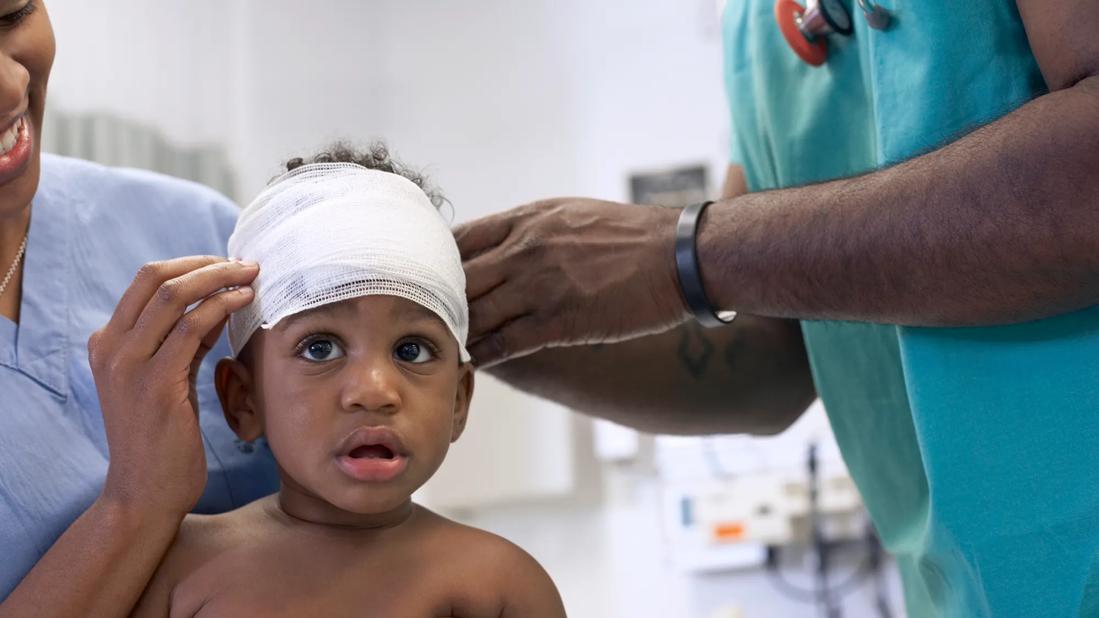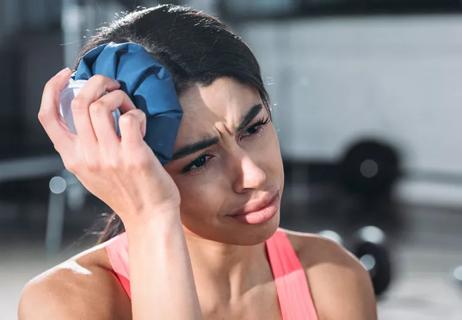Watch for severe symptoms in older kids and adults, but kids under age 2 should always see a provider

Your skull does a great job of protecting your brain from injuries. Still, it seriously hurts when you get a “knock on your noggin.” To make matters worse, these accidents often result in an annoyingly big bump — or “goose egg” — that’s tender and painful for days.
Advertisement
Cleveland Clinic is a non-profit academic medical center. Advertising on our site helps support our mission. We do not endorse non-Cleveland Clinic products or services. Policy
The sight of this big bump can be alarming, especially when it happens to your child. Urgent care physician Allan Capin, MD, explains what to do when you or your child gets a bump on the head.
The medical term for a “goose egg” is a hematoma, which is another word for a bruise.
“A hematoma is bleeding and swelling under the skin,” explains Dr. Capin. “Your scalp and head are rich in blood vessels that can easily break from bangs and bumps. The blood gets trapped under your skin, creating a lump.”
People of all ages can get goose eggs, but it often seems to be kiddos who get that noticeable lump.
“Bumps to the head often affect toddlers learning to walk and active kids who bike or play sports,” he notes. “A big goose egg can be stressful for parents, but it doesn’t necessarily mean they have a serious head injury.”
It can be hard to know whether your kid’s goose egg is serious just by looking at it. Sometimes, a massive, angry-looking lump forms even if your child didn’t hit their head that hard. Don’t panic, but follow these guidelines to be safe:
Children under age 2 should see a provider for any type of head injury. If you’re concerned it could be serious, take them to the nearest emergency room.
Advertisement
“A young child’s skull is still soft, so they have a higher risk of a brain injury,” states Dr. Capin. “They also can’t tell you how they’re feeling, so it’s harder to evaluate their symptoms. With this age group, always play it safe and seek medical care.”
It’s also not always easy to know what to do when a preschool- or school-aged child bumps their head. In these cases, consider where they hit their head — and how hard.
“Forehead injuries are common in kids, and this area of the skull is pretty tough,” says Dr. Capin. “Although the goose egg looks terrible at first, they generally recover quickly. Small bumps to the forehead are usually not serious.”
Other areas of the head — like the temples, behind the ears and the face — are more fragile than the forehead.
“A hit to the face, side or back of the head usually requires a check from a healthcare professional,” he adds. “We want to make sure they don’t have a broken bone in their skull or a concussion.”
Bottom line? You know your child best. If they get a goose egg, watch their behavior. “If after careful observation, they are acting consistently well and they’re alert and responding to you, chances are the injury may be minor,” he says.
Adults may not get goose eggs as often as little ones, but that doesn’t mean you should brush them off. Head injuries can be serious at any age.
Older adults in particular have a high rate of bumps to the head from falls because of:
Even without health conditions or medications, older age can make a brain injury more likely.
“Our brain naturally shrinks a little with age, so there’s more room in the skull,” Dr. Capin explains. “This little area of extra space makes it easier for your brain to hit the inside of your skull during a fall or accident.”
And if you’re on blood thinners, there’s an additional risk of severe bleeding.
“A slow bleed in the head is dangerous, but you can’t see it without specialized imaging such as a CT scan,” he adds. “Older adults who take blood thinners should always seek medical care if they happen to hit their head.”
Some head injuries require emergency medical care. If your child hits their head, head to the ER if you notice:
Advertisement
Signs of a serious head injury in adolescents and adults include:
Even a minor goose egg can be a real pain. If you want to minimize the bump, act fast.
“An ice pack can encourage the bleeding to stop, which will shrink the bump,” shares Dr. Capin. If you can get your hands on an ice pack, use it as soon as possible after the injury:
Preventing goose eggs
Accidents happen, but you can help limit head bumps and injuries in children if you:
Adults can help prevent head injuries with these fall-prevention strategies:
Advertisement
Our brains are precious cargo, so a bang on the head can send your stress levels to the ceiling. Knowing the signs of a brain injury can help you gain some control over the situation.
“When a bump to the head happens, try to assess the symptoms,” advises Dr. Capin. “Look for signs of possible bleeding or a brain injury — persistent headaches, nausea, vomiting, blurry vision, etc. — and don’t hesitate to contact your provider or go to the ER if you’re unsure. Even if it turns out to be minor, you can have peace of mind knowing you got it checked out.”
Advertisement
Learn more about our editorial process.
Advertisement

Repeated trauma over time can have a cumulative effect

Both are a collection of blood in your brain, but they happen in different parts, for different reasons and with different symptoms

Yes, there is a connection between this injury and disease, and not just for athletes who play high-impact sports

Concussion protocol describes the steps needed to test for concussion and return to play — timelines vary

Know the warning signs, what to do and what not to do

The short answer from a concussion specialist

This chronic condition most commonly causes pelvic pain and severe cramping during periods, but it can bring other types of pain symptoms, too

You’ll work with your provider to weigh the pros and cons of different medications

The best parenting style balances enforcing rules and showing plenty of love

Tips include cutting back on sugar, focusing on exercise and managing stress

It can be harder to let go when you’ve invested time, energy and emotions — but it might be the healthier choice long term